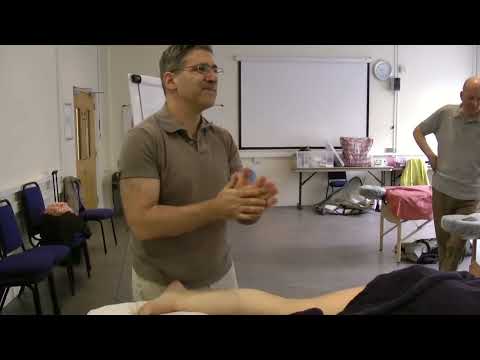What you need to be aware of regarding massages for complementary purposes
While a complementary massage may seem purely for pampering yourself, it's actually a very beneficial and healthy method to reduce tension and stress. It helps relax and improves blood flow to the affected area. A massage is an effective pain reliever that can be used to treat certain physical injuries. It improves mobility and helps reduce stiffness and swelling in muscles. Here are some information about massages that are complementary.
Structural integration is an advanced type of massage. To manipulate the myofascial system of the body, practitioners use a variety hand and soft tissue techniques. This system is what surrounds muscles and gives them shape. To release tension, therapists trained in this method may employ slow, deep stretching exercises. They may also apply pressure on different points on the body, and ask their clients to move when the practitioner applies pressure. A structural integration session can last for a long time and prove incredibly beneficial.
Structural Integration is a hands-on technique for soft tissue. The level of certification will determine the ability of a client to sit or stand during the session. It is difficult to determine the level required to be considered a professional in this area. However it is crucial that a school graduate who is certified by CBSI has attained the highest standards of competence in their practice. According to the U.S. Bureau of Labor Statistics employment growth in massage-oriented professions will increase by 21% through 2029. This is largely due to the growing interest in natural health and the ageing population.
Another kind of massage involves manipulating the body's myofascial system. It focuses on the fascia, which covers the muscles and creates the body's shape. Practitioners can use slow, deep stretching exercises, as well as constant pressure. They can request their clients to move while they apply pressure. The aim is to align the body and allow it to move in a fluid manner. This type of massage is similar to a physical therapy session, with some differences.
A typical structural integration session consists of ten to thirteen sessions, which build upon each other. The practitioner employs a variety of methods to treat the myofascial system in the body to attain a healthy, balanced posture. The body's muscles and fascia are connected by an invisible ring. Therefore, the body's skeleton is inherently linked to the entire structure. https://www.runningmanmassage.com It is therefore essential for your health to ensure that you are in good physical health.
A typical structural integration session includes 10 to 13 sessions. Each session builds upon the one preceding. This type of massage uses varying pressure levels and manual manipulation to maintain the body's structural integrity. To address different issues, a therapist may target different parts of the body. People with a complicated medical history may benefit from this treatment. Massage therapy is also recommended by a doctor for those who have a weak or injured back.

A typical structural integration session is comprised of 10 to 13 sessions. Each session builds on the previous and concentrates on the same muscles. The practitioner uses manipulative techniques and pressure to balance and align the body's structures during the course of treatment. The body is split into segments and layers. The practitioner will examine your posture and discuss your personal history to determine which area of the body needs attention. A structural integration session includes training in movement to improve your posture and movement habits.
Structure integration is a more intense type of massage than regular massages. Each session builds on the previous. It can take between 10 to 13 sessions. It employs gentle pressure to specifically target muscles in each layer and section of your body. The structural integration specialist will review your background and habits of work and determine the right amount of pressure to the targeted areas. The client should be aware of any pain they're experiencing during a session. The practitioner will adjust to your specific body position if you are comfortable during treatment.
A typical structural integration session is comprised of ten to thirteen sessions. Each session builds on the previous. This hands-on approach to soft tissue manipulation utilizes varying pressure and manual manipulation to enhance the structural integrity. The body is divided into layers and segments. Typically, this kind of massage is comprised of 10 to 13 sessions which last between two and four hours. These sessions could be complemented by movement education.